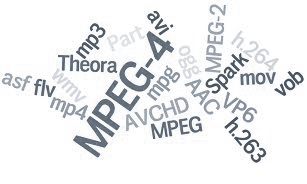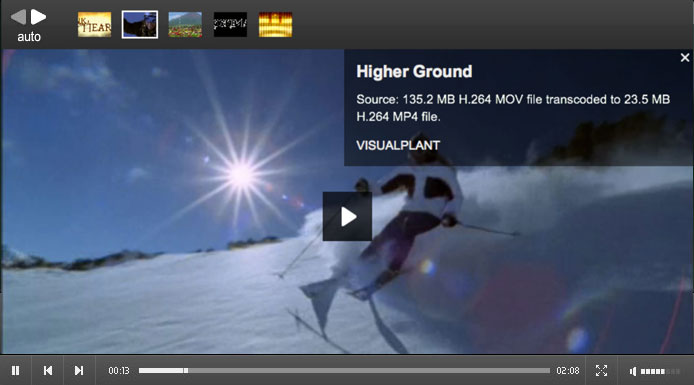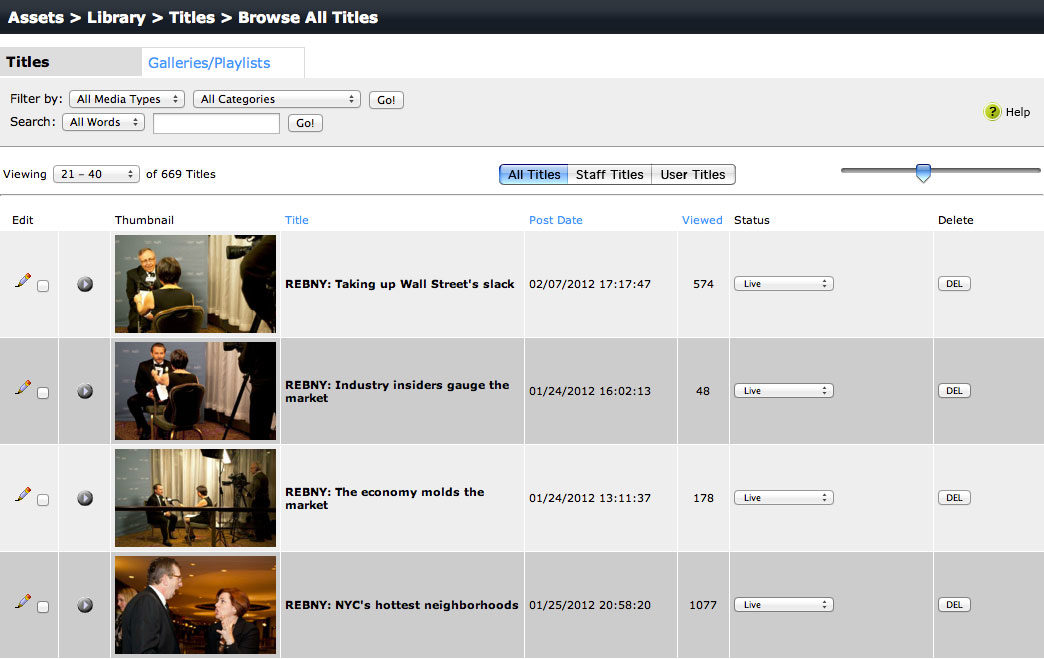A seminal video platform that helped pioneer a multi-billion-dollar market.

Background
In the early 2000s I joined a magazine publisher's Web division.
They had just acquired the most popular video site on the Web at the time and wanted to design it for profitability.
I worked with their management to create a new subscription and content management platform geared for video publishing. We relaunched in
~60 days and turned it profitable
in the first year. In the process I became intimately acquainted with the unique challenges of putting video
on the Web years before it became wildly popular.

Problem
Most businesses had high-speed
Internet in 2002,
but Cable and DSL penetration for consumers was sparse.
This combined with a lack of file standards and
competing browser plugins made the consumer experience for video really bad.
No single company could solve all the problems alone. Lack of content and poor quality
yielded low viewership causing publishers to misread
the problem as one of disinterest which in turn discouraged technologists from tackling the space.
But like text and audio before, video would inevitably come of age.
Someone needed to take
the initiative to innovate the publishing tools,
to create a "Wordpress for video" at the opportune moment when the market was ready for it.


2006: "The year of Net video"
Market timing
By 2006 video codecs like Sorenson had matured enough to achieve decent quality and reduced file size. Macromedia's Flash
plug-in provided the right blend of browser independence and player interactivity. High bandwidth penetration for
consumers finally surpassed 50%.
I gambled Web video was finally poised to take off. Perhaps, it was wishful thinking and a little luck.
I left my full-time job to bootstrap a video-as-a-service (VAAS) platform. My former employer became
my first client, and my new company—Visualplant—became financially solvent without venture capital.
Get customers, not investors.
—TIM O'REILLY
Approach
Every successful software product shares at least one thing in common: it launches and iterates fast.
It was less than 45 days from design concept to when I launched a beta of Visualplant
to millions of users.
How did I build one of the first ever scalable Web video services in 2 months? I didn't do it all at once. I began by designing a beautiful, unique custom-branded video player that delivered titles and playlists from a network of CDNs. Ironically, I put my first efforts into designing a new player when players already cluttered the market. Why? Because I needed to generate excitement on the look-and-feel and the potential for two-way interaction in a video client, and I knew if I could blow minds with the UI, I could then build the plumbing to support it quickly. A CMS wasn't sexy, but engaging, high-quality video served instantly would raise eyebrows. I showed a prospective customer my fullscreen player with auto-playback and offered to serve their biggest viewing event of the year on it: the Super Bowl commercials. Almost overnight I had millions of users on my product.
How did I build one of the first ever scalable Web video services in 2 months? I didn't do it all at once. I began by designing a beautiful, unique custom-branded video player that delivered titles and playlists from a network of CDNs. Ironically, I put my first efforts into designing a new player when players already cluttered the market. Why? Because I needed to generate excitement on the look-and-feel and the potential for two-way interaction in a video client, and I knew if I could blow minds with the UI, I could then build the plumbing to support it quickly. A CMS wasn't sexy, but engaging, high-quality video served instantly would raise eyebrows. I showed a prospective customer my fullscreen player with auto-playback and offered to serve their biggest viewing event of the year on it: the Super Bowl commercials. Almost overnight I had millions of users on my product.
Fig 1: The first Visualplant Web Player combined video, audio, images, captions and targeted advertising.
The success of the demo rollout earned me a follow-up meeting. I presented with the tact, "if you like the video player, then check out the platform that powers it."
I arrived with design mockups of the CMS dashboard and
convinced my first client to sign an agreement to move forward with our service.
Design first, then code.
—i.e., think before you act
Fig 2: The desktop uploader prepped files for upload and offered metadata input for title and playlist creation.

Fig 3: Title Manager and Custom Reporting screens
Traction
With the income to develop and the traction to attract more clients, we did both.
Releasing new features almost weekly, within three months we had developed a multi-tier, dynamically scalable
platform with two primary interfaces: a web services API
for developers and a WYSIWYG templating engine for non-technical publishers.
I designed each tool on the micro-level, writing
pseudo-code to describe every user and system interaction,
and I illustrated the meta-view allowing my developers
to see the forest through the trees and for my clients to appreciate what they were
paying for.
Software design, documentation and marketing interwoven:
Fig 4: Visualplant Distributed Platform

Lessons
Everyone should have the experience of starting a company. I gives perspective on how one's specialties fit in to a larger picture.
To create a product for a market that previously did not exist demands taking huge risks and making good judgements every day. Those begin with an understanding of the market, users and conceiving a product that can add value. To do this, I exploited the elements of design to inspire belief in a company mission. But design became more than just visual or interactive; it descended to the dictionary definition: "[de·sign] - to form or conceive in the mind; plan; to intend for a definite purpose." And I had to learn not only what to design, but how to design it and how to get from point A to B, quickly and efficiently. The team, clients, press and users all needed to be engaged immediately, continually and entirely.
This experience informed my product design method to become a collaboration between me and everyone who touches the product, including most crucially, real-world users. Because a concept is not a product until it proves itself in action.
To create a product for a market that previously did not exist demands taking huge risks and making good judgements every day. Those begin with an understanding of the market, users and conceiving a product that can add value. To do this, I exploited the elements of design to inspire belief in a company mission. But design became more than just visual or interactive; it descended to the dictionary definition: "[de·sign] - to form or conceive in the mind; plan; to intend for a definite purpose." And I had to learn not only what to design, but how to design it and how to get from point A to B, quickly and efficiently. The team, clients, press and users all needed to be engaged immediately, continually and entirely.
This experience informed my product design method to become a collaboration between me and everyone who touches the product, including most crucially, real-world users. Because a concept is not a product until it proves itself in action.
Credits
Founder / Director / Product Designer
Jason Schmidt
Senior Software Developer
Matthew Rice
Software Developer
Vitaliy Heleznov
Software Developer
Vadim Zacez
Software Developer
David Lafferty
Legal Counsel
Amy Laub
Software Developer
Brian Brandes
Software Developer
Ryan Provost
Sales Engineer
Craig Miller
Technical Consultant
Chris Mollis



